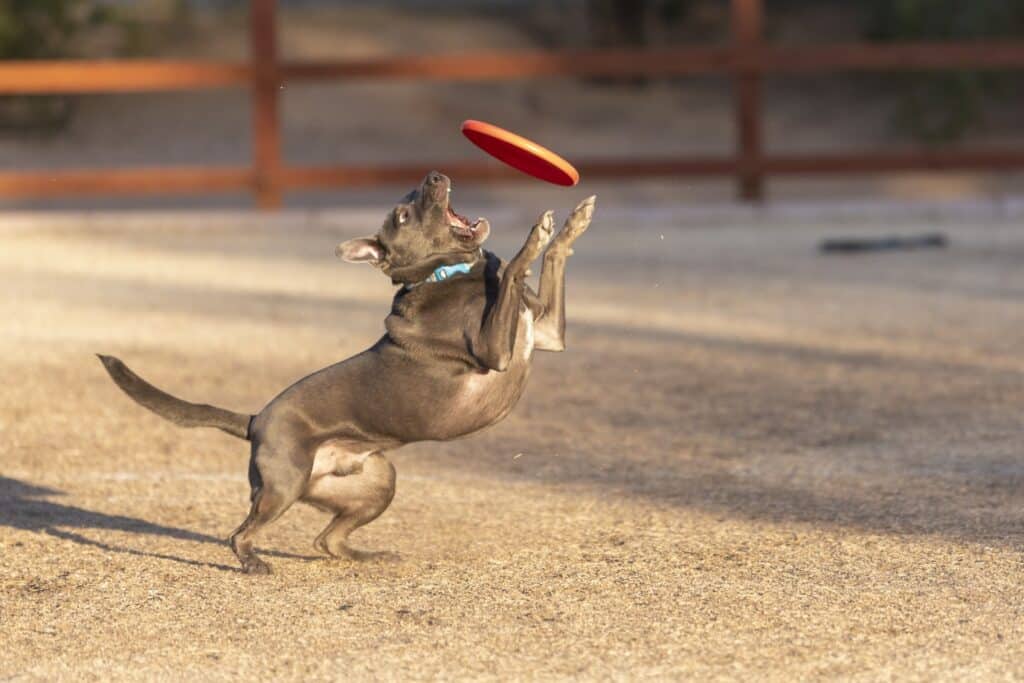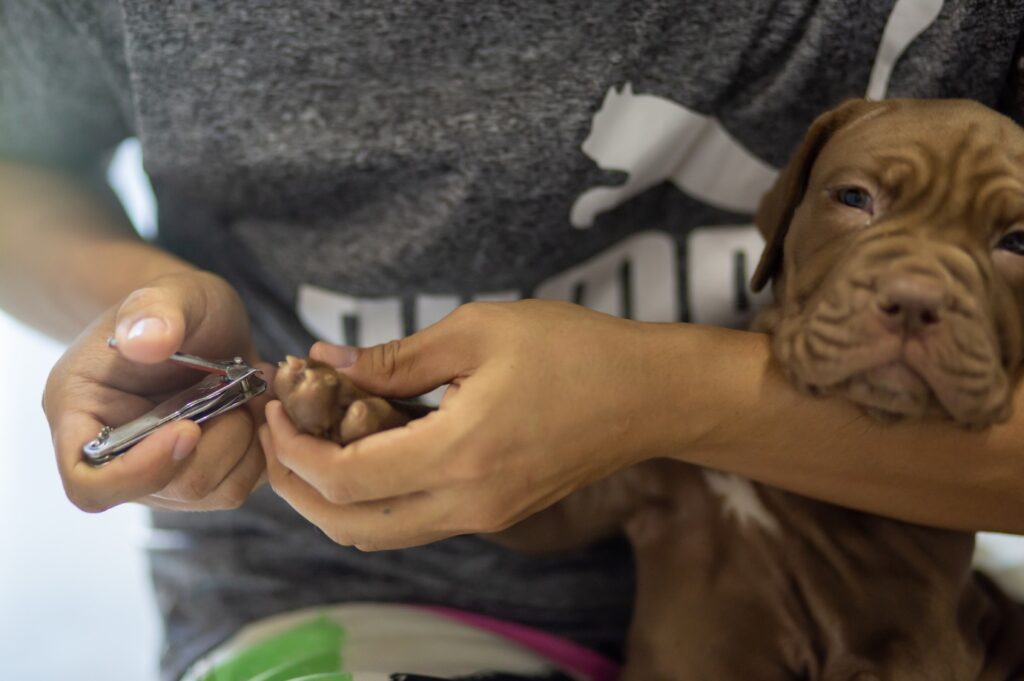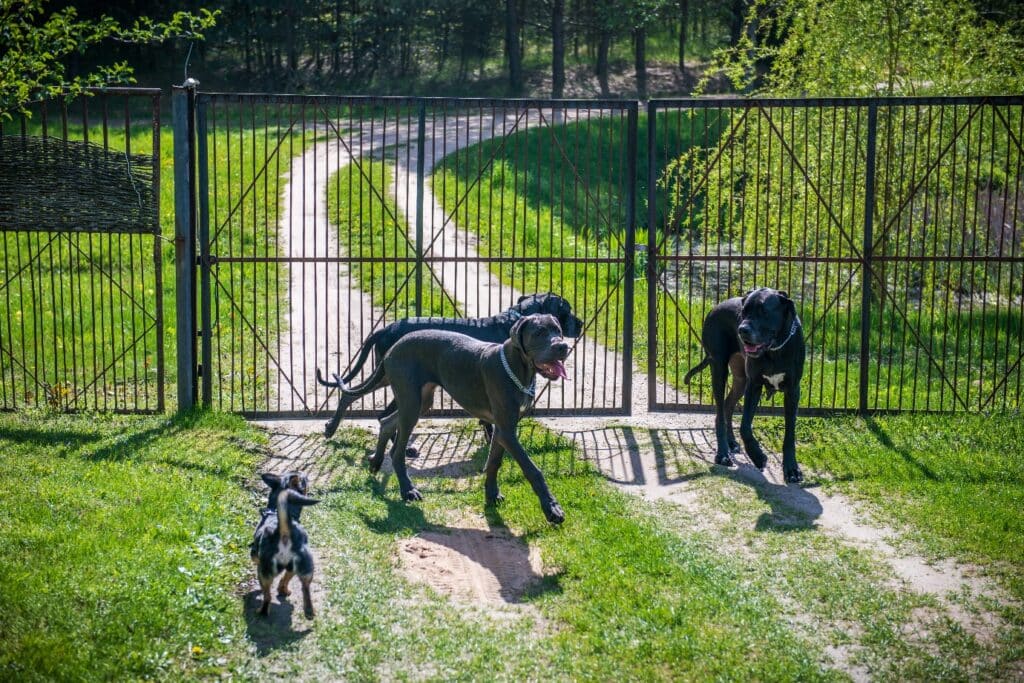There’s a new designer dog trend on the rise and it’s called the Great Dane Pitbull mix, also known as the Great Danebull. These dogs are becoming increasingly popular as people are looking for unique crossbreeds they can call their own.
In this guide, we’ll cover everything you need to know about Great Danebulls including their temperament, size, diet, and exercise needs.
So, keep reading if you’re interested in learning more about this amazing mixed breed!
Great Dane Pitbull Mix – Breeding History
The Great Dane Pitbull mix is a relatively new crossbreed, only having been around since the early 2000s. It is a mix of two very popular and well-known breeds – the Great Dane and the Pitbull.
The Great Dane is a large German breed that was originally bred for hunting boar and deer. They are gentle giants and are known for being good-natured and even-tempered.
The Pitbull, on the other hand, is an American breed that was originally bred for dogfighting. They are strong and powerful dogs with a lot of energy and stamina.
The Great Danebull is a cross between these two breeds and as such, inherits the best traits from both. They are large gentle giants with a loving and caring nature.
You may also be interested in – Great Dane Great Pyrenees Mix (Great Pyredane) – Explained
Great Danebull – Size and Appearance
The Great Dane Pitbull mix is a large dog, typically weighing between 70 and 120 pounds. They are muscular and well-built, with a strong, sturdy frame. Males tend to be larger than females.
Their coat is short and thick and can be any color or combination of colors. The most common colors are black, brindle, and blue.
Great Danebulls have a wide head with a strong jaw, and their ears are typically cropped to give them a more streamlined appearance.
They have a muscular body, and their tail is long and thick, and may be either left natural or docked.
Great Danebull – Temperament
The Great Danebull is a large, muscular breed of dog known for its protective instincts and dominant genes. Great Danebulls are often used as guard dogs.
They are protective of their family and home and can be aggressive toward strangers. Due to their protective nature, they require early socialization and training to help them become well-rounded dogs.
Great Danebull – Training Needs
As with all dog breeds, proper training is essential for a Great Danebull. Without proper obedience training, this breed can become unmanageable and destructive.
Luckily, Great Danebulls are intelligent dogs and are typically eager to please their owners, making them fairly easy to train.
Training sessions should be short, sweet, and consistent in order to keep your dog’s attention focused.
As with all dogs, positive reinforcement is key – treats, verbal praise, and petting are all great ways to reward your dog for good behavior.
Keep in mind that Great Danebulls are large dogs and will need extra time and patience when learning basic commands like ‘sit’ and ‘stay’.
But with a little bit of effort, you’ll have a well-trained dog in no time!
Great Danebull – Exercise Needs

The Great Danebull is a large and powerful dog, so it’s important to make sure they get enough exercise.
A good walking or running routine will help them stay healthy and happy. They will also enjoy playing fetch or other games in your yard if you have the space. They typically need about an hour of exercise per day.
If you live in an apartment or don’t have a lot of space for them to run around, you may need to take them to a dog park or doggy daycare so they can get the physical activity they need.
Be mindful not to over-exercise your Great Danebull pup, as they can be prone to joint problems later in life.
It’s important to start them off with a moderate exercise routine and then increase it gradually as they get older.
Please consult your veterinarian if you have any concerns about how much exercise your Great Danebull should be getting.
Great Danebull – Mental Stimulation
If you’re willing to put in the extra effort, a Great Danebull could be the pup for you.
They tend to have separation anxiety and can exhibit destructive behaviors when they’re feeling ignored – meaning they definitely need dedicated owners.
They can also act aggressively, so we wouldn’t recommend them to first-time dog parents.
However, if you think you can handle it, these dogs are known for being loyal and loving companions. The key is to provide them with their daily exercise needs and to keep them mentally stimulated with activities and toys.
If you can do that, you’ll have a lifelong friend by your side.
Great Danebull – Grooming Requirements

The Great Danebull has a lovely dense coat and will require daily brushing with a slicker brush to remove any dead hair and keep its coat in good condition.
This should be done at least once a week, and more frequently if they are heavy shedders. If you have a smooth-coated Great Danebull, weekly brushing with a soft brush will suffice.
Proper care of your dog’s coat is essential to keeping them healthy and happy.
Their teeth should be brushed at least once a week to remove any tartar buildup and help keep their gums healthy.
Nails should be trimmed regularly to prevent them from getting too long and causing discomfort.
Their ears should be checked regularly for any wax buildup or irritation.
All in all, the Great Danebull is a low-maintenance breed when it comes to grooming, but they do require some regular care to keep them looking and feeling their best.
Great Danebull – Health Conditions

The Great Danebull is a large and powerful dog, so it’s important to be aware of some of the common health concerns that may affect them.
Some of the most common problems seen in Great Danebulls are hip dysplasia, elbow dysplasia, and bloat.
While these conditions can’t always be prevented, they can often be managed with proper care and treatment.
Hip dysplasia is a condition where the hip joints don’t form correctly, which can lead to pain and lameness.
Elbow dysplasia is a similar condition affecting the elbow joints. Both of these conditions can be diagnosed with x-rays and managed with medication, weight control, and exercise.
Bloat is a condition that can be life-threatening if not treated immediately. It occurs when the stomach fills with gas and twists, cutting off blood flow.
Bloat can be prevented by feeding smaller meals and avoiding exercise immediately after eating. If you think your dog is bloated, it’s important to take them to the vet right away.
While these are some of the most common health concerns for Great Danebulls, it’s important to remember that every dog is different, and any health problems should be discussed with your veterinarian.
Great Danebull – Nutrition Requirements
All breeders and pet parents should be aware of the correct nutritional requirements for their Great Danebulls.
While every dog is an individual and will have different dietary needs based on their age, activity level, and health status, there are some general guidelines that all owners should follow.
The first step in ensuring your Great Danebull gets the proper nutrition is to feed them a high-quality diet that is specifically designed for large breeds.
This type of food will provide the right balance of proteins, fats, carbs, vitamins, and minerals that your dog needs to stay healthy.
It is also important to avoid feeding your dog table scraps or other people’s food as this can lead to obesity and other health problems.
Doggie treats should also be given in moderation, as many of them are high in calories and fat.
Pro Tips
- The amount of food your Great Danebull needs will depend on their age, activity level, and health status.
- Puppies and young dogs will need more food than adults as they are growing and developing.
- Adult dogs who are inactive may need less food than those who are active or working dogs.
- And finally, dogs with health conditions such as diabetes or allergies may need a special diet to manage their condition.
If you’re unsure about how much to feed your dog, it’s best to talk to your veterinarian for guidance.
They can help you create a custom nutrition and exercise plan that is perfect for your dog’s individual needs.
Great Danebull – Are they friendly with other dogs?

Yes, Great Danebulls are generally friendly with other dogs. However, like any dog, they may bark or growl if they feel threatened.
If you have another dog in your home, it is important to introduce them slowly and supervised to make sure they get along well.
Due to this mixed breed’s size and protective nature, it is important to socialize them well as puppies, so they are comfortable around people and other animals.
Early socialization will help prevent any potential aggression from developing.
Great Danebull – Child Friendly

The Great Danebull is a family-friendly dog breed that makes an excellent choice for families. They are gentle and loving and make great companions for children.
They are also very loyal and protective of their family and will do anything to keep them safe.
Due to their size, they may be a little overbearing for young children or the elderly. In these situations, caution should be exercised so there are no accidents.
However, if you’re looking for a family dog that will love your children as much as you do, the Great Danebull is the perfect choice.
Great Danebull – Drooling Levels
One thing that you should know about Great Danebulls before you get one is that they do drool, a lot! This is due to their loose lips, which is a characteristic of the breed.
There are several reasons that the Great Danebull will drool more than usual. These include:
* When they are excited
* When they are hungry
* When they are thirsty
* When they have just eaten or drunk something
So, if you are looking for a family dog that doesn’t drool too much, the Great Danebull is probably not the right choice.
However, if you can put up with a bit of extra drooling, then these dogs make great family pets.
Great Danebull – Barking Levels
Many people are interested in getting a Great Danebull but are concerned about their barking levels. While it’s true that Great Danebulls can be quite vocal, there are a few things you can do to help manage their barking.
Here are a few tips:
– Use positive reinforcement training to teach your dog when and how to bark. This will help them understand when it is appropriate to bark and will also help reduce their overall barking levels.
– Keep your dog well exercised. A tired dog is a good dog and is less likely to bark excessively. Ensure you provide them with plenty of opportunities to run and play.
– Avoid leaving your dog alone for long periods of time. If they are left alone for too long, they may start to bark out of boredom or frustration.
Great Danebull – Adaptability to Weather
Great Danebulls are very adaptable to cold weather thanks to their thick coat of fur.
They are an excellent choice for families in colder climates looking for a loyal and loving companion.
Thanks to their cold weather tolerance, Great Danebulls can be found in many different parts of the world today.
From the cold streets of Copenhagen to the snowy forests of Siberia, these dogs have proven that they can thrive in most weather conditions.
When it comes to hot climates, Great Danebulls can also fare quite well.
Although they do not have the same fur coat as some of the other cold-weather breeds, their short hair does provide them with some protection from the sun.
Great Danebulls are also known for their love of water, so swimming is always an option to help keep them cool in the summer months.
Overall, Great Danebulls are a very versatile breed that can be a great fit for families in any climate.
Great Danebull – Lifespan

The average lifespan of a Great Danebull is approximately 8 to 10 years. However, some may live up to 12 years or more with proper care.
The key to a long and healthy life for your Great Danebull is to provide them with quality nutrition, plenty of exercise, and regular visits to the veterinarian.
Some of the health issues that may shorten the lifespan of a Great Danebull include hip and elbow dysplasia, cardiac conditions, cancer, and bloat.
By working closely with your veterinarian and providing your dog with proper care, you can help them enjoy a long and happy life.
Great Danebull – AKC Recognition
The Great Dane Pitbull mix is classified as a working dog by the American Kennel Club.
This breed is not recognized by the AKC but is recognized by the United Kennel Club and the International Canine Association.
RECOMMENDED – Great Dane Poodle Mix (Great Danoodle) – 18 Things you must know!
Great Dane Pitbull Mix – Puppy Prices
Puppy mills, backyard breeders, and pet stores are not the best places to find a Great Danebull puppy. These establishments often cut corners to save money, which can result in health problems for the puppies.
Healthy Great Danebull puppies can be found at Shelters, Rescue organizations, and reputable breeders. The average price for a puppy from one of these sources is $500 to $1200.
Before you bring your new puppy home, make sure you have everything you need to provide them with a comfortable life. This includes quality dog food, a collar and leash, a bed, toys, and bowls for food and water.


